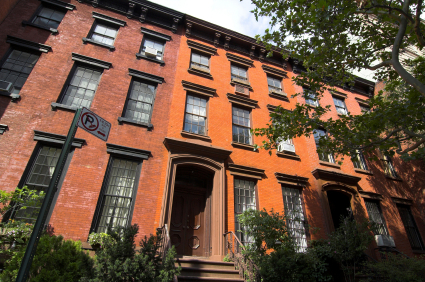Commercial Construction Loans
By Steven Roberts Updated on 7/19/2017.jpg) Commercial properties are readily available for purchase. However, it is most efficient and effective for some businesses to construct their building from the ground up. In this circumstance, it is important for the owner to finance the construction and finished building with a commercial construction loan. There are two separate loans, short term construction loans, and mini-permanent loans.
Commercial properties are readily available for purchase. However, it is most efficient and effective for some businesses to construct their building from the ground up. In this circumstance, it is important for the owner to finance the construction and finished building with a commercial construction loan. There are two separate loans, short term construction loans, and mini-permanent loans.
Short Term Construction Loan
These loans pay the developer for the upfront service fee, along with the cost of building materials and legal processing.
Mini-Permanent Loan
These loans accumulate the short term construction loan and act as a “bridge” between short term and permanent financing. Residential construction loans require only a two part process. This process provides the project with an operating history before officially refinancing to stable in the market place as it may be a challenge to get capital from investors. Mini-perm loans usually last 3 – 5 years. One type of mini-perm is a hard loan, which balloons the payment schedule based on 20 + years of amortization. Soft loans typically amortize longer than 25 years and offer benefits to borrowers that repay the loan early. Interest only repayment is also available.
Application, Underwriting, and Closing
Application
To apply for a commercial construction loan, you will likely find the best options available at local and regional banks. The application process requires a pre-screen before moving along with underwriting your request.The following documents often required:
- Tax returns
- Financial statements
- List of owned real estate
- List of contingent liabilities
- Proposed project’s performance
- Plans for the project and costs
Underwriting
To qualify, commercial lenders will evaluate the risk in lending to you. They begin with a profit test, which estimates your earnings relative to the cost of the loan. Lenders will then review your loan-to-value ratio for the finished property, along with a loan-to-cost ratio. Next, the debt service coverage ratio, which looks over monthly operating income incurred and finally evaluate the developer’s net-worth-to-loan-size ratio.
Closing
After approval, the lender will create a binding contract. After the contract is signed and the loan is approved, the closing process will begin. This process is by far the most complicated in this type of loans, and commonly produced with the assistance of both parties’ attorneys. The loan administers will then fund a portion of the loan at closing, and disburse the remaining funds on a monthly basis. Verification of the project's progress and incurred costs will be done each month to match the funds requested by the developer.

Didn't find the answer you wanted? Ask one of your own.
Related Articles
Ask our community a question.
Searching Today's Rates...

Featured Lenders
Kat Whitman
Whitman Met, Inc.
Sacramento, CA
Lisa Stepp
RBS Citizens
Clifton Park, NY
Cameron Burke
Vision One Mortgage
Huntington Beach, CA




